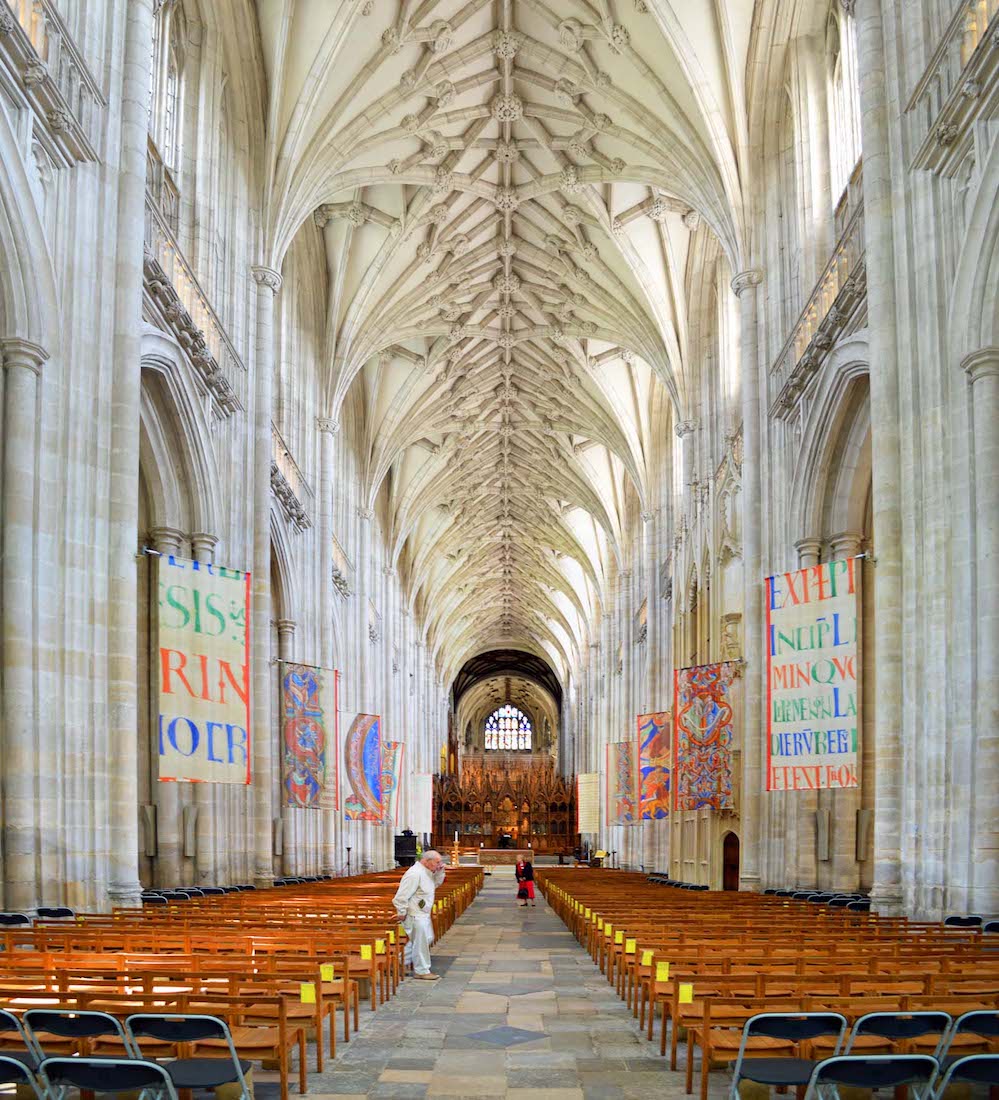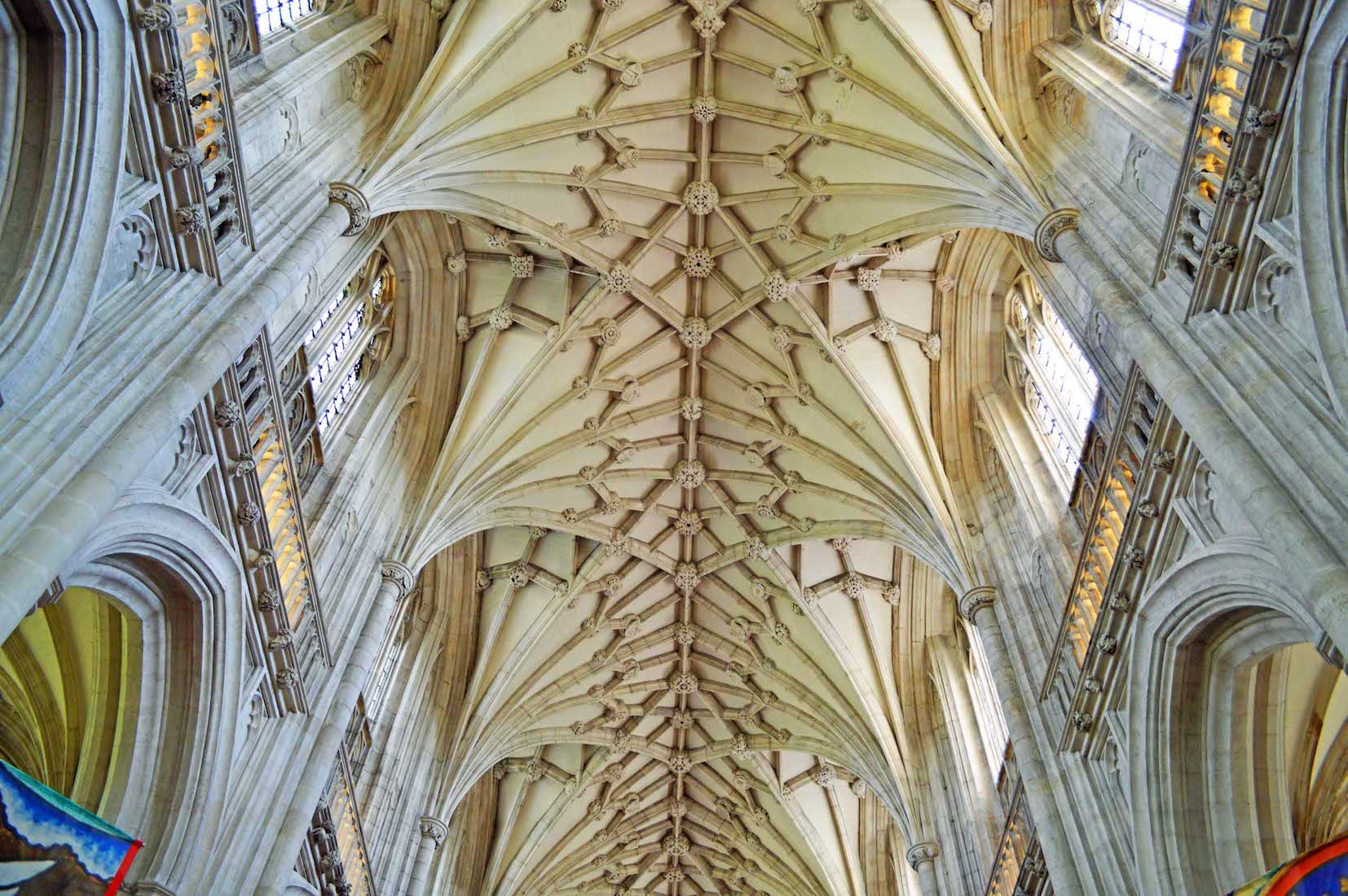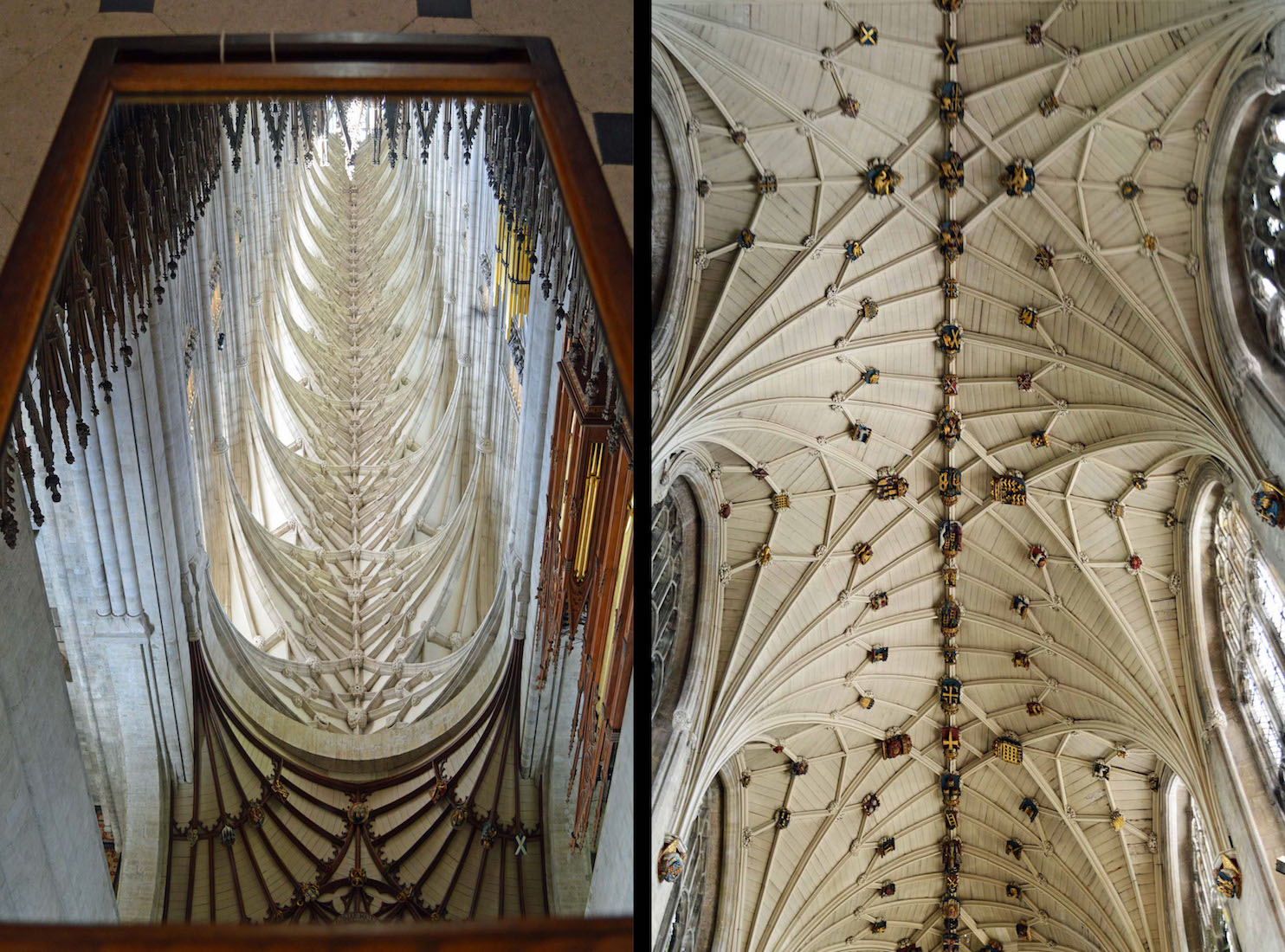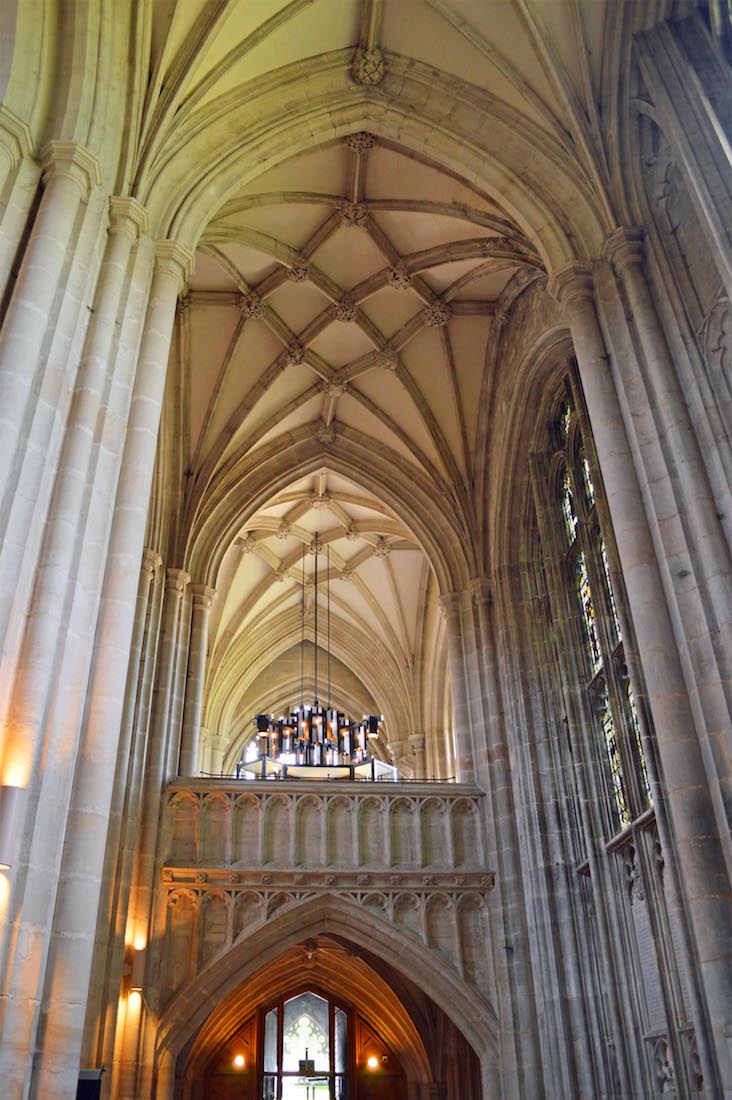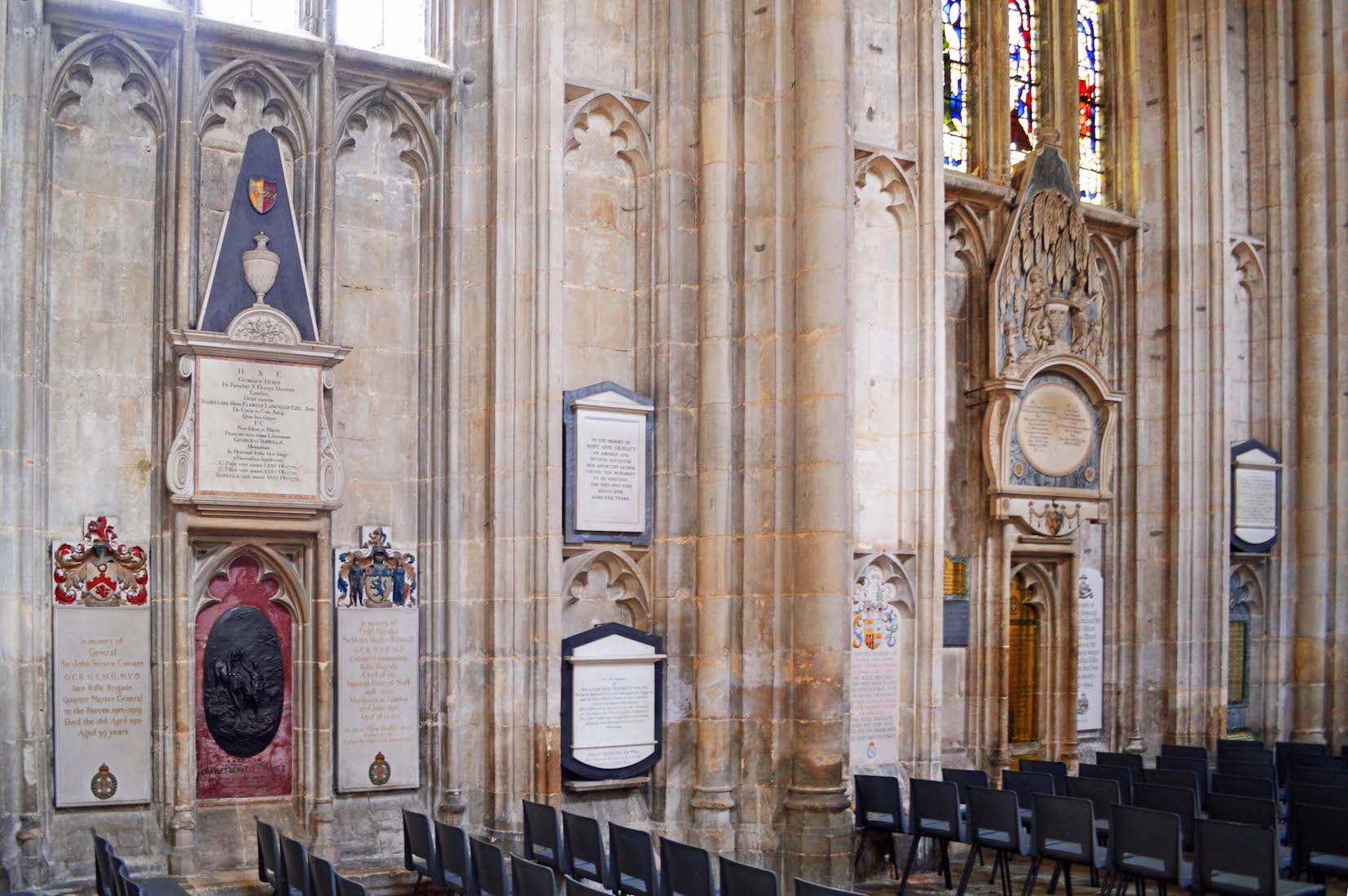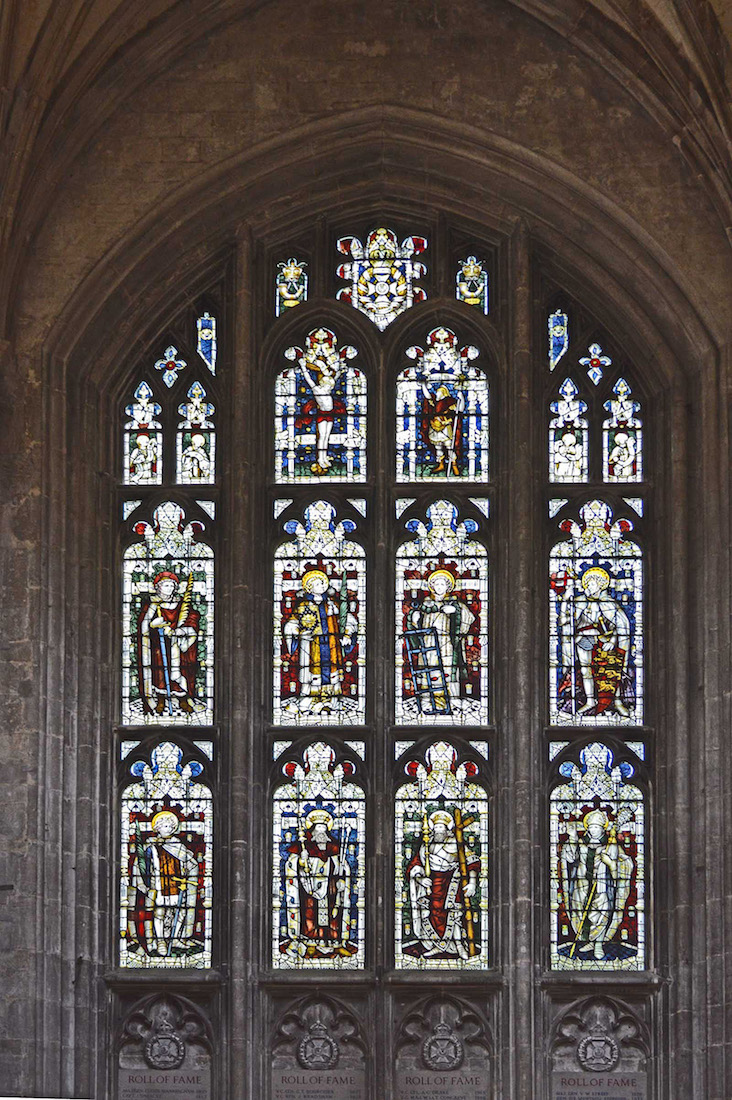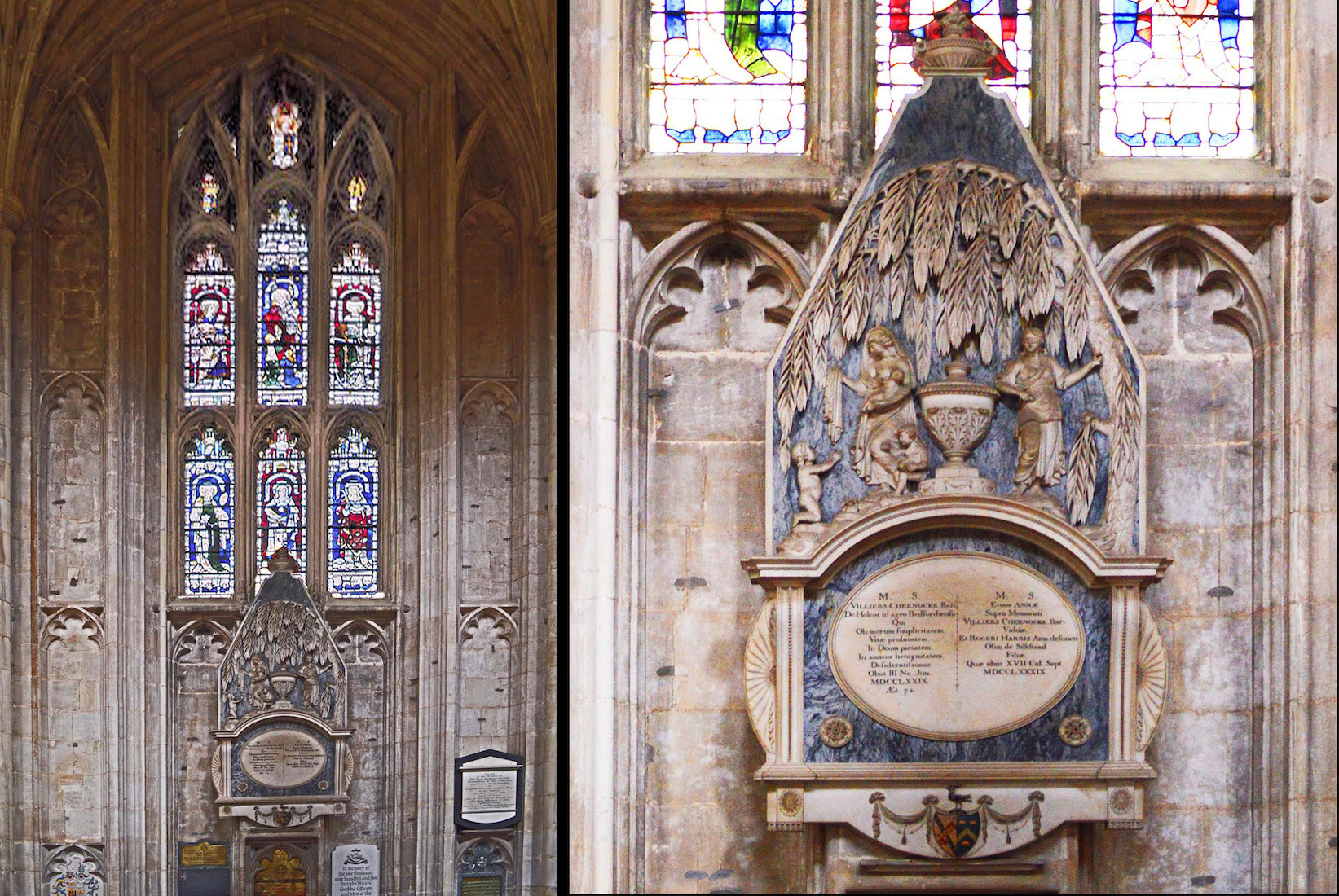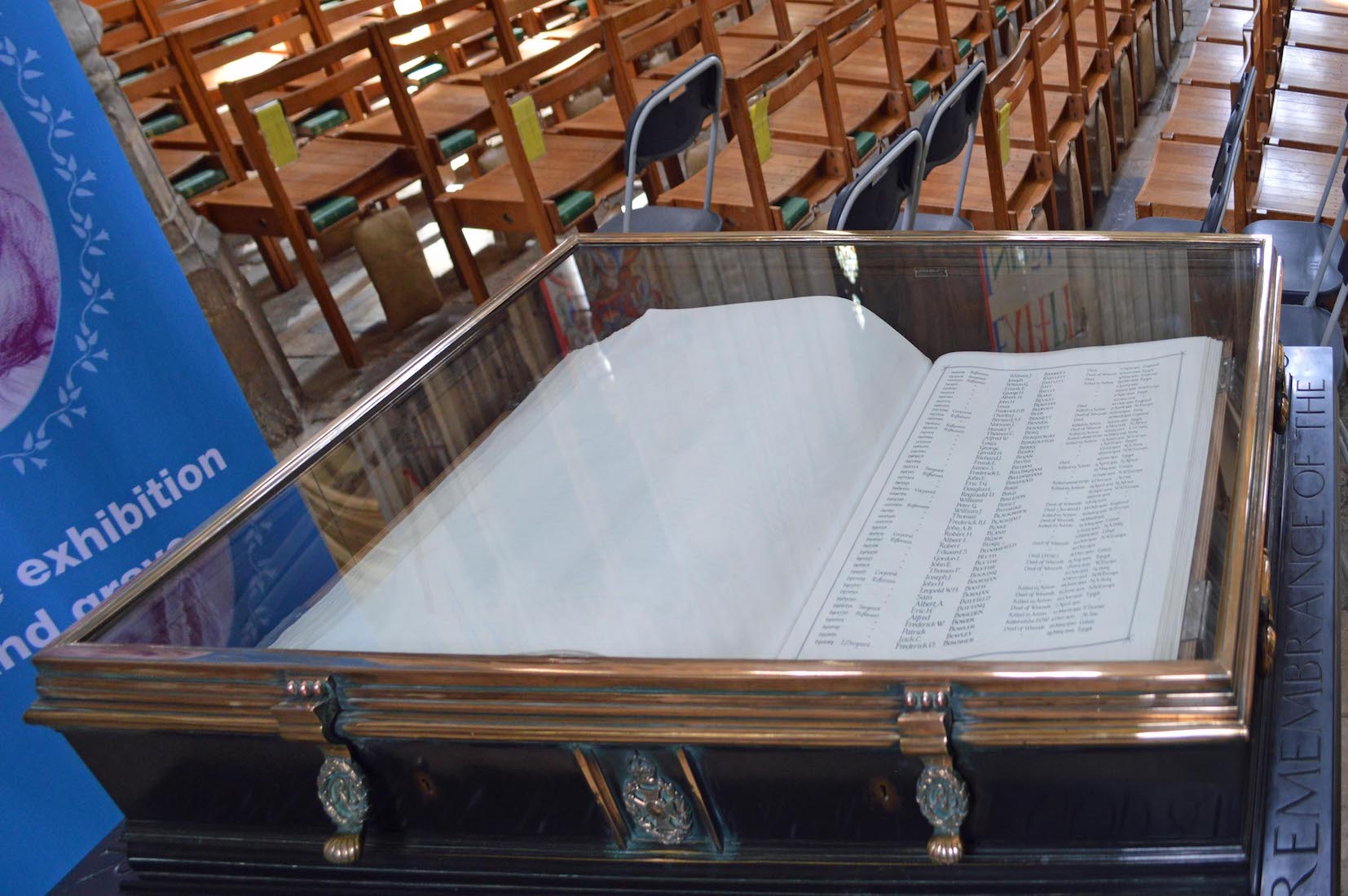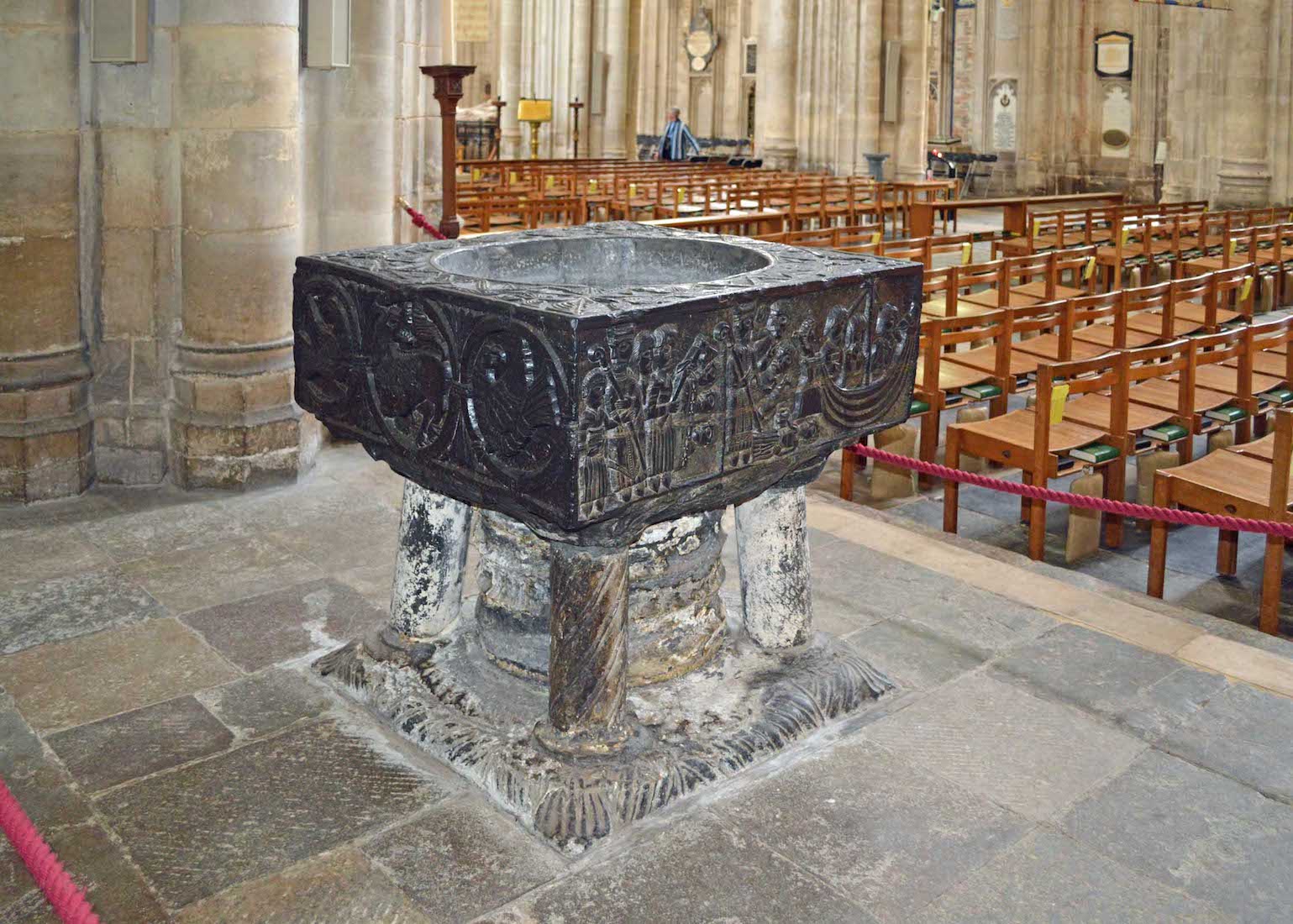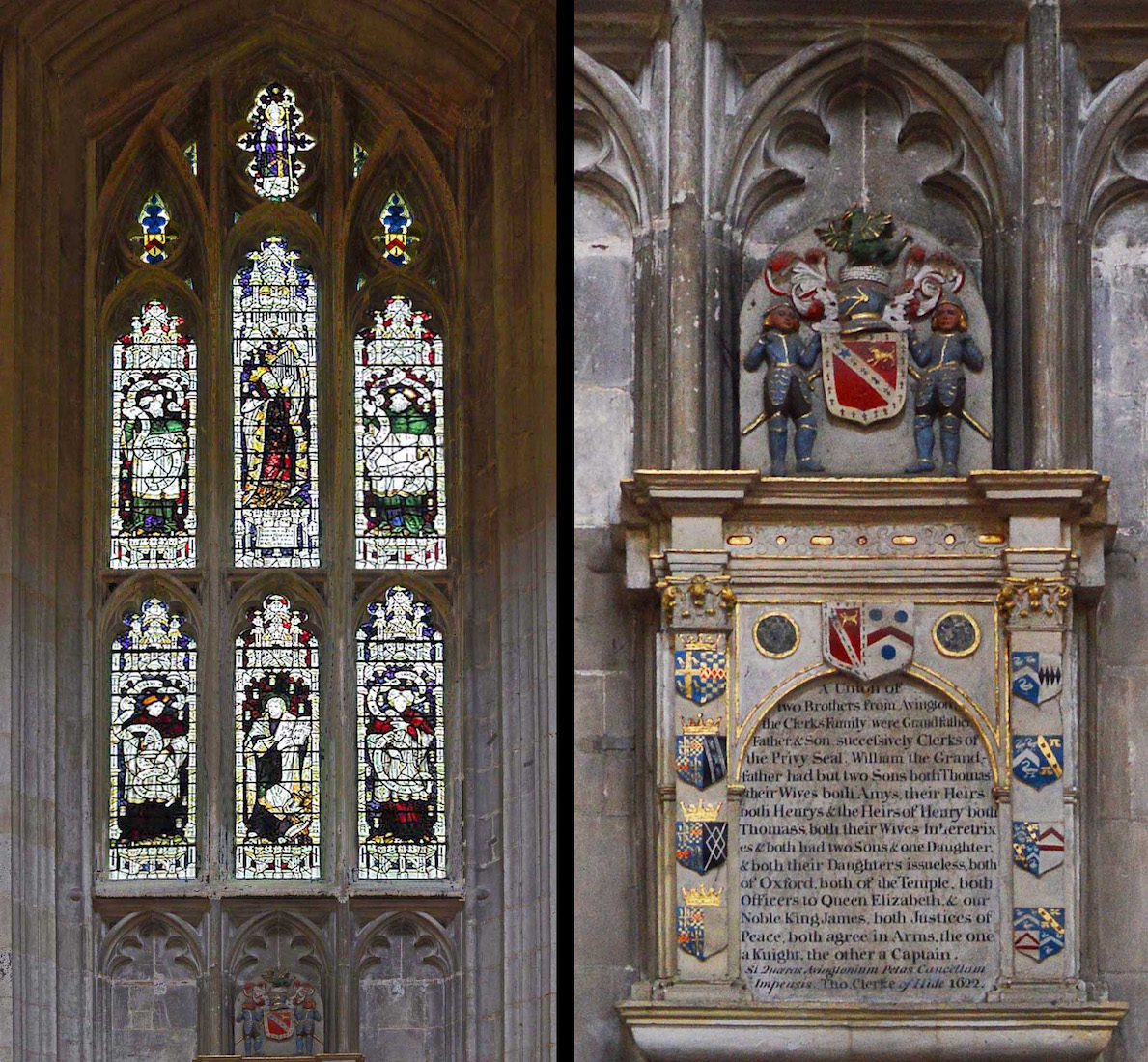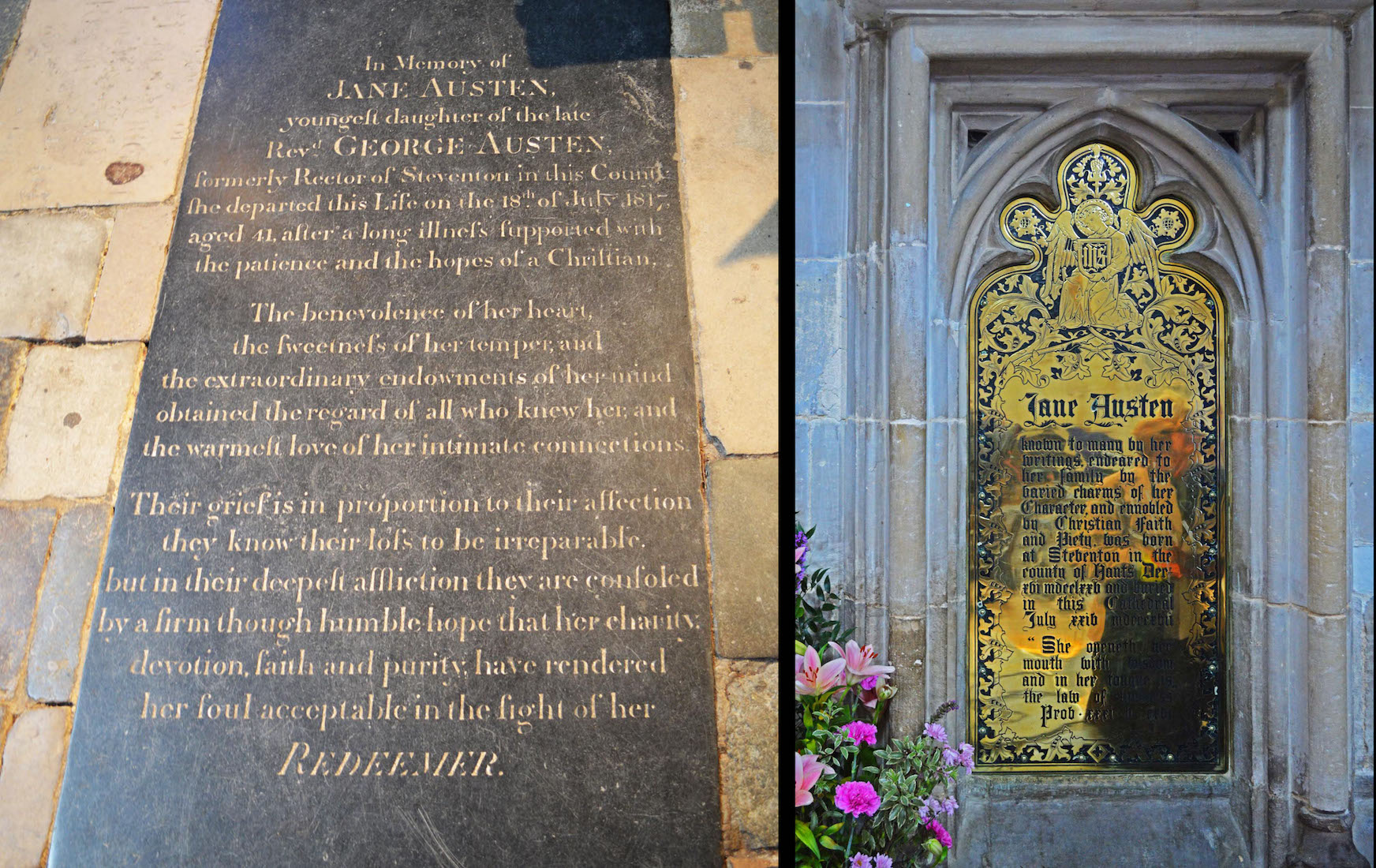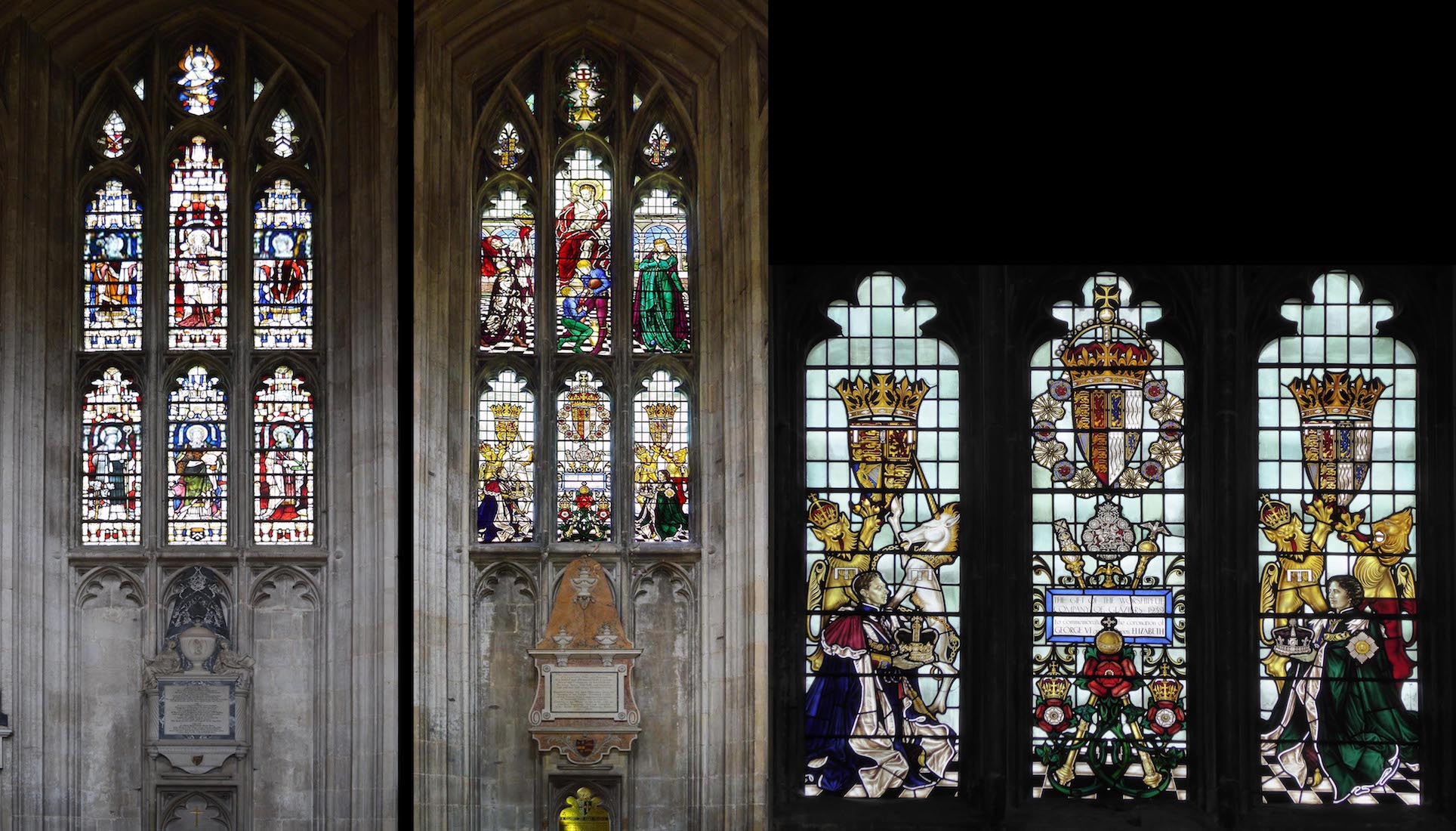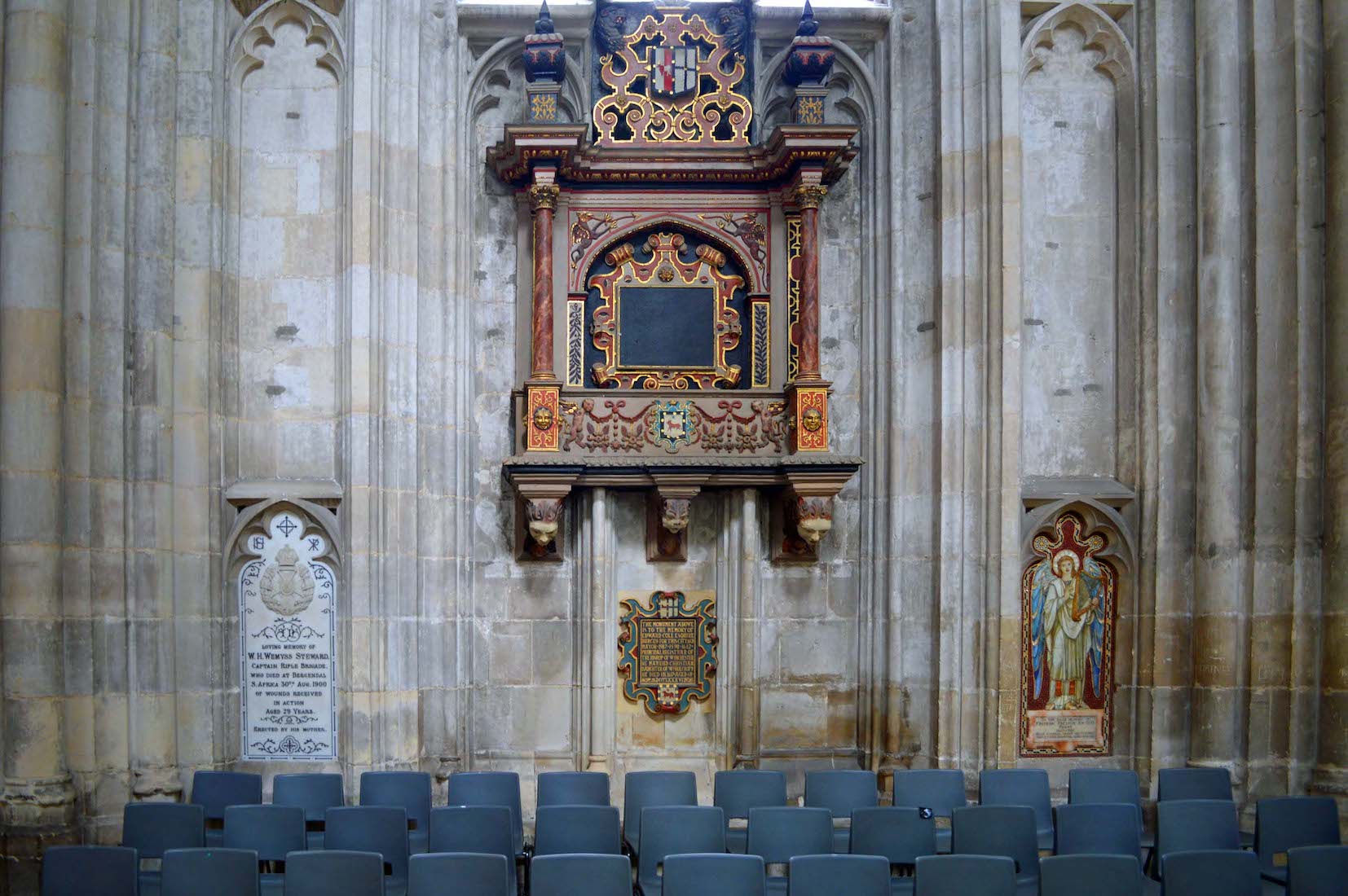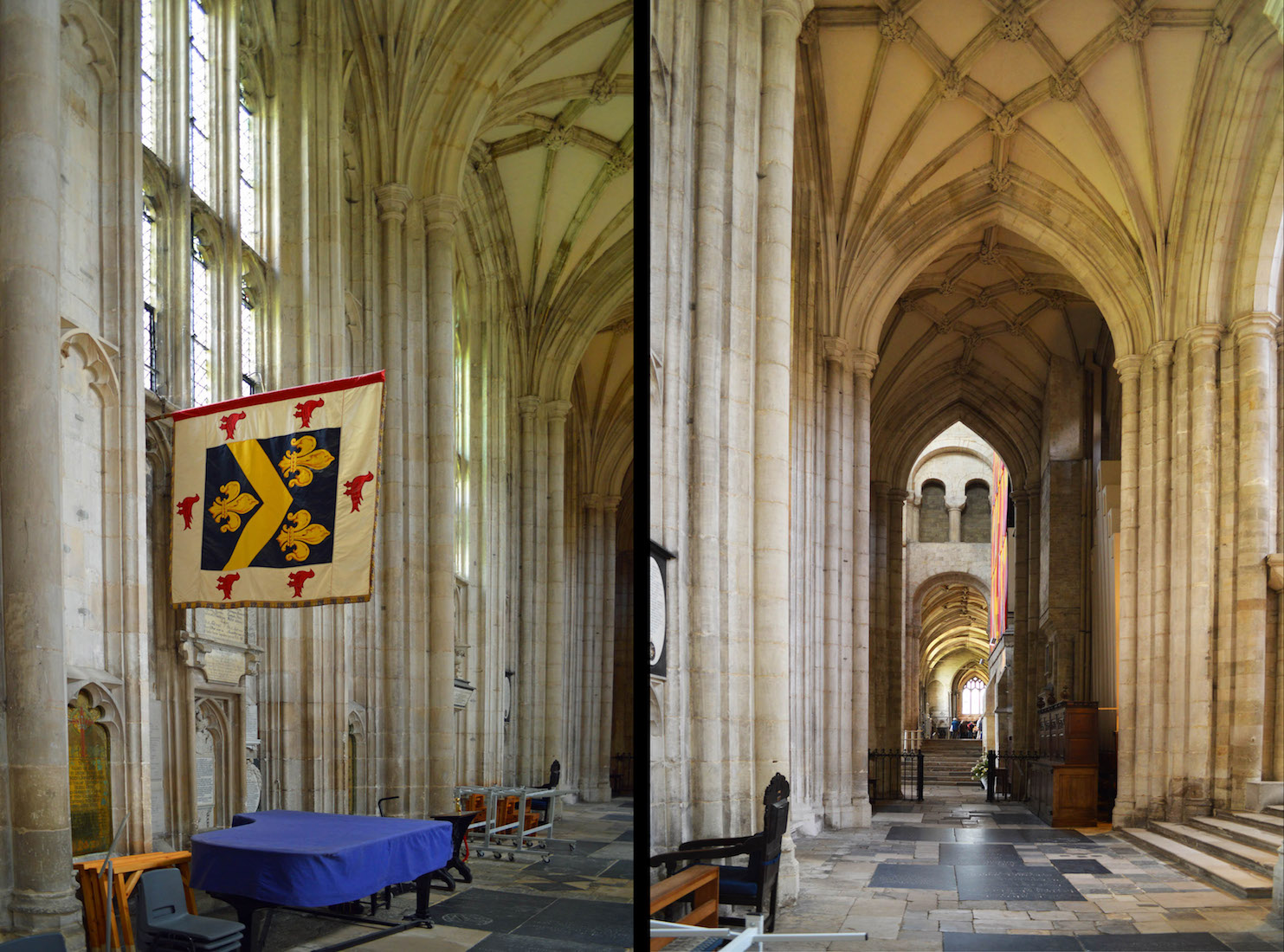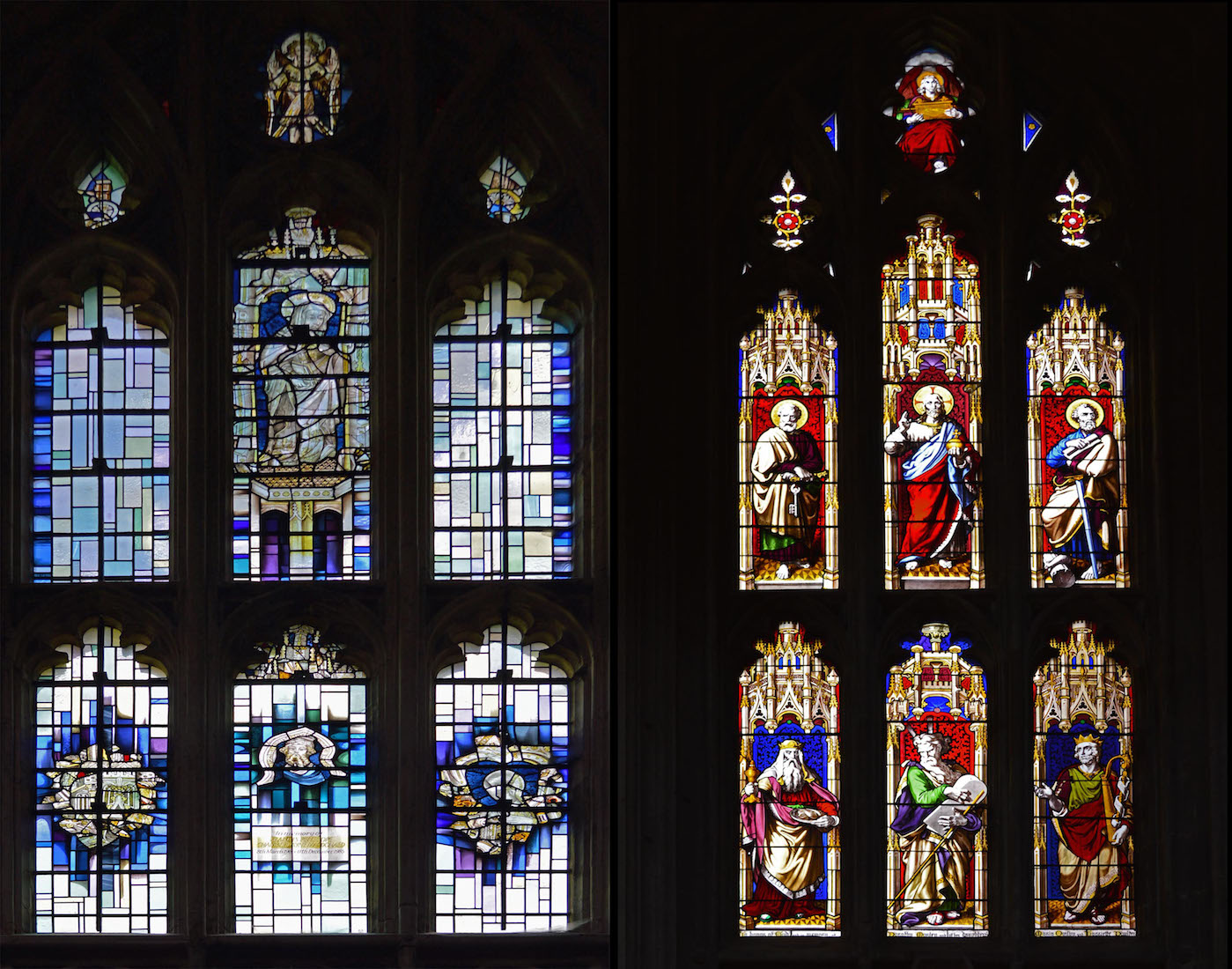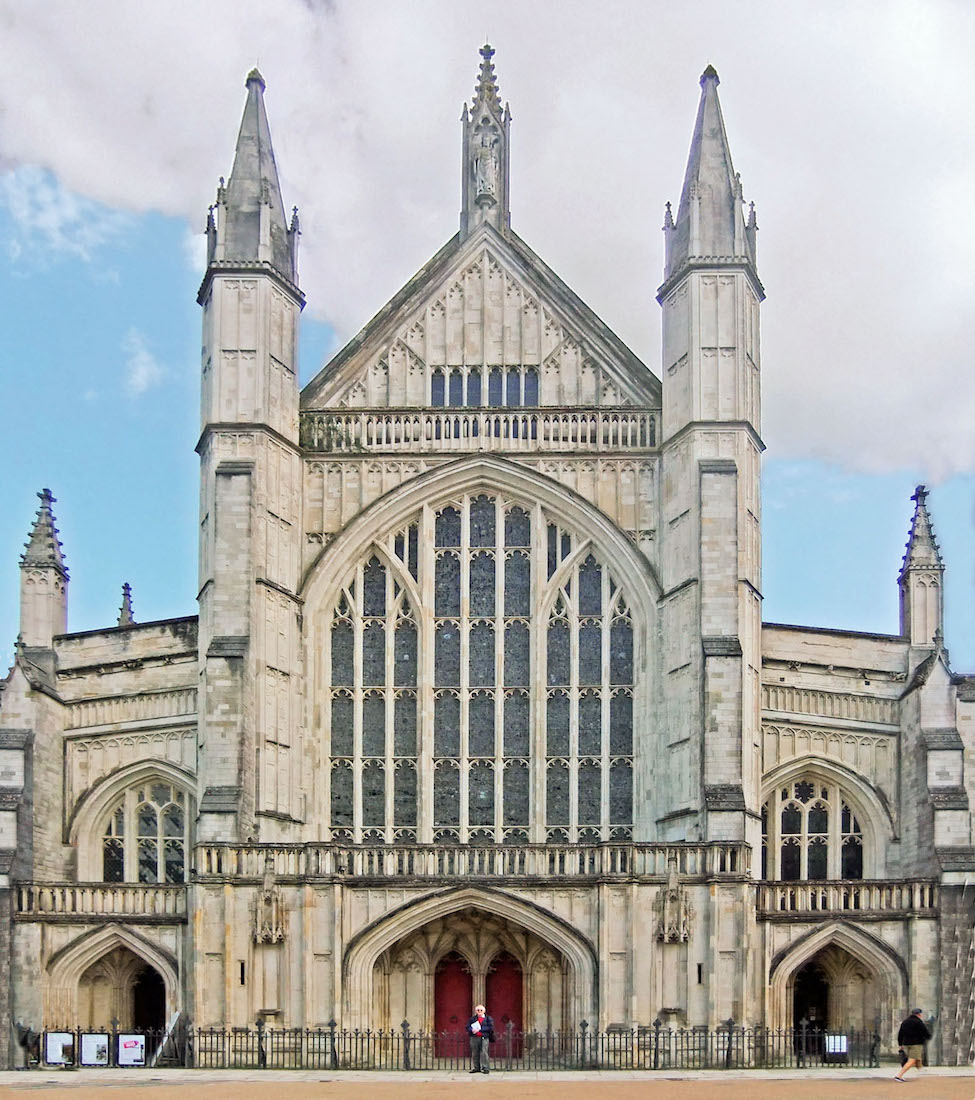
The West wall is very grand, but not ornate like some other cathedrals. Work began on the West front of the Cathedral in 1360 under Bishops Edingdon and Wykeham. Bishop Edingdon (1346–1366) removed the two Westernmost bays of the nave, built a new West front and began the remodelling of the nave. PLAN
23. NAVE VAULTING
The nave ceiling is amazing with its many added lierne ribs.
24. MIRROR AND BOSSES
In the central aisle stands a reflecting mirror which enables one to view the vaulting more easily. A closer look reveals various coloured bosses at the joins of the stone ribbing. We notice that the ceiling is actually constructed out of timber.
25. NORTH WEST CORNER
The Cathedral Treasury is located up a level in the North West corner of the Cathedral.
27. GREAT WEST WINDOW AND NAVE NORTH WINDOW
From this elevation it is also possible to get a close up view of the great West window. We shall return to this. We also take the opportunity to admire a small portion of the nearest nave North window from here. Saint Mauritius (Saint Maurice) was the leader of the legendary Roman Theban Legion in the 3rd century, and one of the favorite and most widely venerated saints of that group.
28. NORTH NAVE WALL
We begin our more detailed investigation of Winchester Cathedral by inspecting the North nave wall. The stained glass windows are placed high in the wall, and there are many monuments and plaques. A detailed account of these can be found in the excellent website http://churchmonumentssociety.org/Hampshire.html .
29. NORTH NAVE WINDOW 1
In this section of the wall are two stained glass windows – the first is this window with the pane (lower left) we saw from the treasury.
30. NORTH NAVE WINDOW 2 AND CHERNOCKE MEMORIAL
The next stained glass window is above the marble memorial to Sir Villiers Chernocke (1779). The Chernockes were an ancient and once wide-spreading family which were descended from the Chernockes of Chernocke Hall in Lancashire.
31. BOOK OF REMEMBRANCE
Nearby is a glass case with a Book of Remembrance, listing the name of every Rifle Brigade soldier killed in the Great War.
32. BAPTISMAL FONT
Half way down the nave North aisle we come to the baptismal font. This ancient, polished dark stone font, with its unique carvings of the miracles of St Nicholas, the kindly children’s saint, is one of the Cathedral’s greatest treasures.
33. FONT DETAIL
The font was brought from Tournai, in modern Belgium, in the 12th century, and has been in constant use ever since.
34. NORTH NAVE WINDOW 3 AND THE CLERK MEMORIAL
Nearby is the third window on this side, and beneath it an attractive monument to Thomas Clerk of Hide (1629). The window remembers Jane Austen. The inscription on the Clerk monument refers to Avington church where there are more Clerk monuments, but the church was rebuilt and the monuments lost.
35. BURIAL FLOOR PLAQUES
Close by the font are several burial plaques, including one for novelist Jane Austen. Jane Austen is now celebrated as one of England’s greatest novelists, but when she was buried in the Cathedral in 1817 at the age of 41, her original memorial stone made no mention of her books.
36. AUSTEN PLAQUES
The floor plaque for Jane Austen tells of Jane’s various qualities, and how she was loved by her circle of friends. The inscription ends with the injunction ‘Remember’. You can read the brass plaque erected in 1872 on the wall nearby to redress the omission in the North aisle stone. Above the plaque is a further memorial in the form of the stained glass window with the inscription: Remember in the Lord Jane Austen who died July 18th A.D. 1817.
37. NORTH NAVE WINDOWS 4 AND 5
We continue along the nave North aisle past two more stained glass windows and various memorials. The interesting window shown is a Royal Commemorative Window showing George VI and Elizabeth Bowes-Lyon, the gift of the Worshipful Company of Glaziers in 1939 to commemorate the coronation of George VI and Elizabeth. This heraldic window shows Queen Elizabeth and King George VI. The window is date 1959, and celebrates the Coronation of King George and Queen Elizabeth.
38. COLE MONUMENT
A little further along is an interesting monument to Edward Cole. Edward Cole was Mayor of Winchester in 1587, 1598 and 1612, and died in 1617.
39. FLAG AND NORTHEAST AISLE
Nearby hangs a lone flag featuring six doves, a chevron and three fleur di lis. It would be useful to have more information about this flag. We continue walking up the nave North aisle, alongside the altar platform. To our left are two more windows.
40. NORTH NAVE WINDOWS 5 AND 6
The first is a modern / medieval window displaying various late 14th century fragments set in an attractive contemporary background designed by Alf Fisher of Chapel Studios. It was installed in 1985. The other window displays six figures, not all of whom are easily identified. We might guess St Peter (with the Keys of the Kingdom), Our Lord, ? , Alfred the Great(?), Moses (with horns! – mistranslated from the Hebrew), and King David carrying a lyre.


